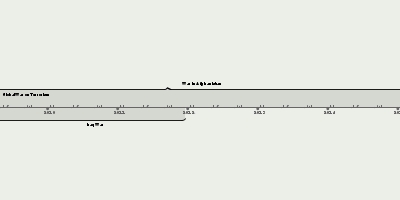13 abr 1940 ano - Second naval Battle of Narvik
Descrição:
The Royal Navy considered it imperative, for morale and strategic purposes, to defeat the Germans in Narvik, so Vice Admiral William Whitworth was sent with the battleship HMS Warspite and nine destroyers; four Tribal-class (HMS Bedouin, Cossack, Punjabi, and Eskimo) and five others (HMS Kimberley, Hero, Icarus, Forester and Foxhound), accompanied by aircraft from the aircraft carrier HMS Furious. These forces arrived in the Ofotfjord on April 13th to find that the eight remaining German destroyers—now under the command of Fregattenkapitän Erich Bey—were virtually stranded due to lack of fuel and were short of ammunition.Before the battle, Warspite launched her catapult plane (a float-equipped Fairey Swordfish, L 9767), with the crew ordered to search for German ships and to bomb any targets of opportunity. After spotting and reporting several of the German destroyers, the crew spotted the U-boat U-64, anchored just 50 yards off-shore in the Herjangsfjord near Bjerkvik. The Swordfish attacked and dropped two 100 lb anti-submarine bombs: one was a near-miss, but one hit and sank the submarine. Most of the crew survived and were rescued by German mountain troops. This was the first U-boat sunk by an aircraft during the war and the only instance of an aircraft launched from a battleship sinking a U-boat.
In the ensuing battle, three of the German destroyers were sunk by Warspite and her escorts and the other five were scuttled by their crews when they ran out of fuel and ammunition. The first lost was Erich Koellner, which tried to ambush the Allied forces but was spotted by Warspite's Swordfish and subsequently torpedoed and shelled by the destroyers and battleship. The destroyer's commander, Alfred Schulze-Hinrichs, and the surviving members of his crew, were captured by Norwegian forces. Then Wolfgang Zenker, Bernd von Arnim, Hans Ludemann and Hermann Künne engaged the British forces but only managed to lightly damage HMS Bedouin and Wolfgang Zenker tried to torpedo Warspite. The British launched a force of ten Swordfish from Furious to attack the German destroyers with 250lb bombs. They scored no hits and two aircraft were shot-down; the crew of one were lost, the crew of the other were picked up by Punjabi after making a forced-landing on the shore.
Finally, when the German destroyers were low on ammunition, they retreated, except for Hermann Künne, which had not received the order. Hermann Künne was fired upon by the pursuing HMS Eskimo, but she took no hits. Out of ammunition but undamaged, Hermann Künne was scuttled by her crew in Trollvika in the Herjangsfjord. After scuttling the ship, the crew placed demolition depth charges on the ship, attempting to sink her in Trollvika's shallow waters. Eskimo, still in hot pursuit, launched a torpedo which hit Hermann Künne, setting her on fire. Whether the German ship's own depth charges or the torpedo from Eskimo was the source of the explosion is unclear. Eskimo was in turn ambushed by Georg Thiele and Hans Ludemann, losing her bow but surviving. Diether von Roeder and Erich Giese, both suffering engine problems, fired upon the British forces while still docked, damaging Punjabi and Cossack but they were both sunk before they could cause further damage. That was the last German counter-attack.
Shore batteries and installations were also very badly damaged by Warspite's guns. On the Allied side, the damage to HMS Eskimo kept her in Norway until May 31st, 1940. German submarines again suffered torpedo failures, when U-46 and U-48 fired at the departing Warspite on April 14th. The remaining German destroyers (Wolfgang Zenker, Georg Thiele, Bernd von Arnim and Hans Lüdemann) retreated into Rombaksfjord and were scuttled soon after. The only German ship which survived within the port area was the submarine U-51.
The Germans lost over 1,000 men, a U-boat, and eight destroyers. With the losses from the previous battle this constituted 50% of the Kriegsmarine's destroyer strength. The shipwrecked crew of Erich Giese and several other German destroyers reported that they were fired on during the engagement.
About 2,600 German survivors from the battle were organised into an improvised marine unit, the Gebirgsmarine, and fought with the 139th Gebirgsjäger Regiment in the subsequent land battle. Although unsuited for combat in the mountainous terrain around Narvik, the shipwrecked sailors manned the two 10.5 cm (4.1 in) FlaK guns and the 11 light anti-aircraft guns salvaged from the ships sunk during the naval battles and conducted defensive operations. The sailors were armed from the stocks captured at the Norwegian army base Elvegårdsmoen, more than 8,000 Krag-Jørgensen rifles and 315 machine guns intended for the mobilisation of Norwegian army units in the Narvik area.
Adicionado na linha do tempo:
Data:
13 abr 1940 ano
Agora
~ 85 years ago
